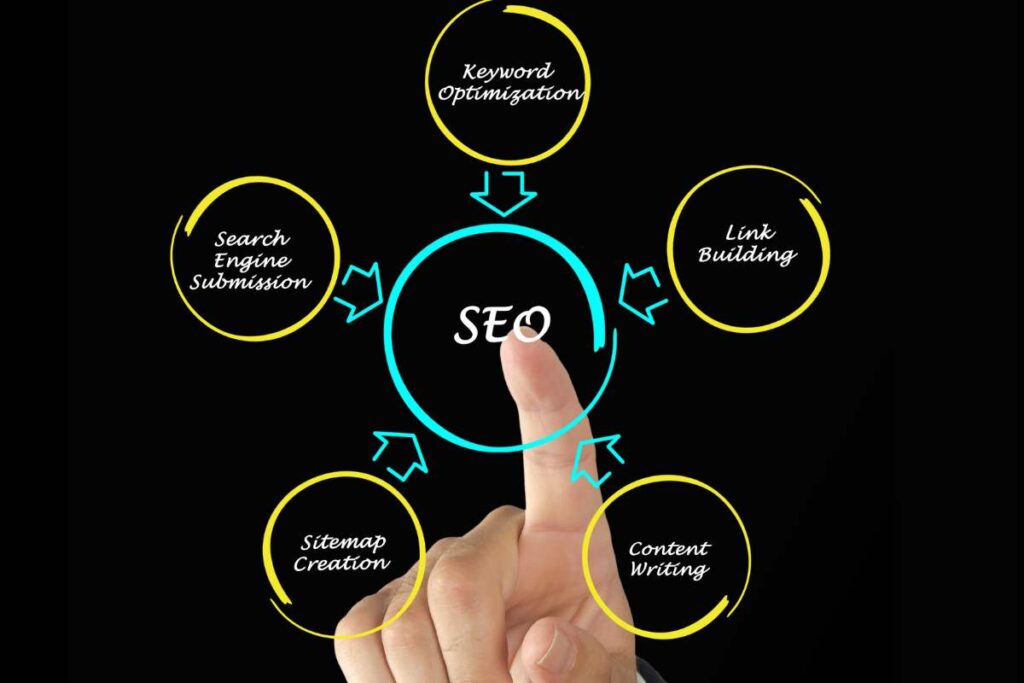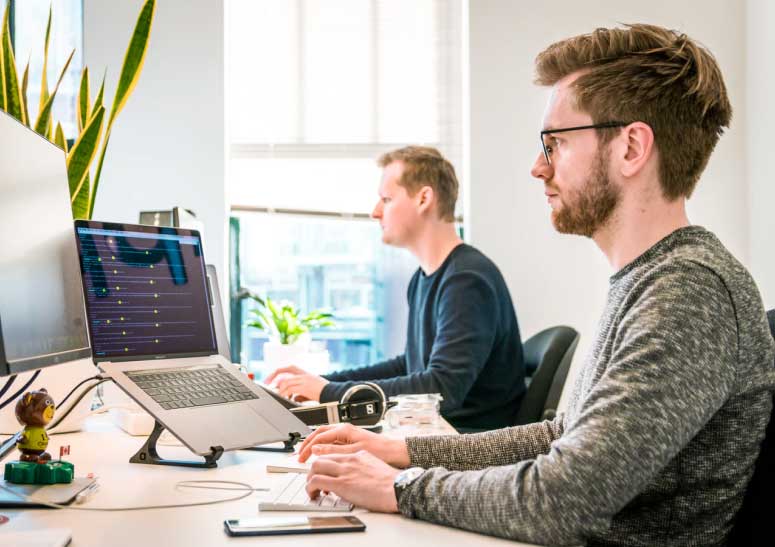Improve Your Core Web Vitals: Expert Website Page Speed Optimization Solutions
Don't let slow website loads drive away customers. Every second your page takes to load costs visitors, reduces engagement, and lowers your Google rankings. At Jamil Monsur, we specialize in making sites lightning-fast, optimizing Core Web Vitals, and delivering measurable outcomes.
Why Website Speed is Your Biggest Competitive Advantage | Get Your Free Core Web Vitals & Page Speed Audit
Don’t let a slow website cost you customers. Every second of delay can drive visitors away, reduce engagement, and hurt your Google rankings. At Jamil Monsur, we specialize in transforming sluggish websites into lightning-fast experiences. Our team optimizes Core Web Vitals, ensuring your site performs flawlessly across all devices and browsers. With proven strategies that reduce load times by up to 70%, we guarantee measurable performance improvements.
Website speed isn’t just about how quickly a page loads—it’s about delivering seamless user experiences that directly impact business growth. Google now uses Core Web Vitals—including Largest Contentful Paint (LCP), Interaction to Next Paint (INP), and Cumulative Layout Shift (CLS)—as key ranking factors. Faster sites earn better visibility, higher engagement, and stronger conversion rates. A one-second delay can increase bounce rates by 20% and reduce conversions by up to 12%. Fast websites keep users engaged, encourage deeper browsing, and boost sales. By optimizing both performance and user perception, Jamil Monsur helps your website become faster, rank higher, and deliver real business results that drive growth and revenue.
User Experience & Bounce Rate
Users expect websites to load quickly. Research shows that even a one-second delay increases bounce rates by up to 20%. Fast websites keep your audience engaged, encouraging them to explore your content and become customers.
SEO & Google Rankings
Core Web Vitals—Largest Contentful Paint (LCP), Interaction to Next Paint (INP), and Cumulative Layout Shift (CLS)—are crucial ranking factors. Websites optimized for these metrics rank higher in search results, attracting more organic traffic.
Conversion Rates & Revenue
Website speed directly affects revenue. Slow sites frustrate users and reduce purchases or lead submissions. Studies show that even a one-second delay can lower conversions by 7–12%. Fast-loading pages mean higher sales, more leads, and better ROI.
The Technical Challenges: What's Dragging Down Your Website?
Many websites suffer from technical issues that significantly slow them down. Our experts identify and fix these bottlenecks, including:
- Unoptimized Assets: Large images, uncompressed videos, and outdated file formats.
- Slow Code: Heavy themes, too many plugins, and unminified JS/CSS blocking rendering.
- Server & Backend Lag: Poor hosting or unoptimized databases causing slow Time To First Byte (TTFB).
- No Caching: Lack of browser or server caching leads to repeated resource fetching.
- Third-Party Scripts: Ads, analytics, and tracking codes add overhead, further reducing speed.
By addressing these issues, we enhance website speed, stability, search rankings, and overall user experience.
Our Complete Website Page Speed Optimization Solutions
At Jamil Monsur, we provide comprehensive solutions covering all aspects of website speed to ensure measurable improvements:
| 1. Comprehensive Performance Audit & Strategic Roadmap | 2. Code, Structure, and Frontend Optimization | 3. Image & Media Delivery Enhancement | 4. Server-Side & Backend Acceleration | 5. Mobile-First & Responsive Optimization |
|---|---|---|---|---|
| Our process begins with an in-depth website performance audit that goes far beyond basic speed testing. Using industry-leading tools such as Google PageSpeed Insights, GTmetrix, and WebPageTest, we analyze every performance metric that affects your Core Web Vitals. This includes loading behavior, visual stability, interactivity, and server response times. You’ll receive a comprehensive diagnostic report highlighting specific problem areas—complete with data-backed insights and a prioritized action plan. This forms the foundation for your optimization strategy, ensuring every fix delivers measurable improvements in real-world performance. | Once the audit identifies bottlenecks, we move to code-level and structural optimization. Our team focuses on improving the Critical Rendering Path, ensuring that your website’s essential content loads instantly without being delayed by unnecessary scripts or styles. We remove render-blocking JavaScript and CSS, perform minification and compression of all HTML, CSS, and JS files, and streamline your website’s architecture for leaner performance. We also implement intelligent resource loading, where essential content loads first and non-critical assets are deferred or loaded asynchronously, ensuring your pages render faster and more smoothly across all browsers. | We transform your visual assets into high-performance elements through next-generation image optimization. Every image is converted to modern formats like WebP for reduced file size without sacrificing quality. We enable lazy loading, ensuring off-screen images and videos load only when needed, significantly improving perceived speed. Our responsive image system automatically adjusts file resolution and dimensions based on device type and screen size, ensuring the perfect balance between speed and clarity. This guarantees that your website looks beautiful and loads instantly on any device—from large desktops to mobile screens. | To maximize server-side performance, we implement advanced backend acceleration techniques. This includes server-level caching systems like Redis and Varnish to deliver pre-rendered content quickly, reducing the load on your hosting environment. We integrate Content Delivery Networks (CDNs) to distribute your content globally, ensuring visitors from any region experience ultra-fast access. Databases—especially for WordPress sites—are fine-tuned for efficiency, minimizing query times and redundant requests. Our ultimate goal is to achieve a Time To First Byte (TTFB) below 200 milliseconds, ensuring instant server response and superior performance stability. | With over half of all web traffic now coming from mobile devices, we place a strong emphasis on mobile-first performance optimization. We enhance your website’s speed on mobile networks by reducing load times, optimizing critical resources, and improving rendering efficiency. Our responsive design approach ensures that layouts remain stable and user-friendly across all screen sizes. Every step aligns with Google’s Mobile-First Indexing guidelines, helping your website perform better in search results. The result is a faster, more fluid browsing experience that keeps mobile users engaged and increases overall conversions. |
Take Your Business to the Top
Stop losing customers to competitors. With tailored SEO from Jamil Monsur, your business can rank higher on Google, attract local customers, and grow sustainably.
Book your free SEO consultation today and get a clear plan to dominate search results.

Our Transparent 5-Step Page Speed Optimization Process
- Diagnostic & Benchmarking: Identify current speed and Core Web Vitals score.
- Strategy & Approval: Plan tasks with priorities and estimated results.
- Flawless Implementation: Optimize in a secure staging environment.
- Quality Assurance & Verification: Validate speed gains and Core Web Vital compliance.
- Deployment & Final Report: Launch the optimized site with a complete performance report.

Ready to Leave Your Slow Competitors in the Dust?
Your free Page Speed & Core Web Vitals audit is waiting. Discover the technical issues holding back your website’s performance, traffic, and revenue. Transparent, actionable insights—no strings attached. Start My Free Page Speed & Core Web Vitals Audit

Hear from Our Happy Clients in Sydney, NSW
Frequently Asked Questions (Sydney SEO FAQs)
What is SEO?
Search Engine Optimization (SEO) is the practice of enhancing a website to improve its visibility on search engines like Google, Bing, and Yahoo. The goal of SEO is to attract more organic (non-paid) traffic by ensuring that a website ranks higher in search results for relevant keywords. SEO involves multiple strategies, including on-page optimization, which focuses on improving content, meta tags, headings, and internal links, and off-page optimization, which emphasizes backlinks and online reputation. Technical SEO ensures that a website is easy for search engines to crawl and index by improving site speed, mobile-friendliness, and site structure. By aligning a website with search engine algorithms and user intent, SEO helps businesses reach their target audience, increase engagement, and drive conversions. In today’s digital world, SEO is essential for building online presence, enhancing brand credibility, and gaining a competitive advantage. Effective SEO combines strategy, content, and technical precision.
How does SEO work?
Can I do SEO myself?
Yes, you can do SEO yourself, especially for small websites or personal projects, but it requires time, effort, and continuous learning. Basic SEO tasks like keyword research, optimizing content, writing meta tags, and improving website structure can be learned through online guides and tutorials. Tools like Google Analytics, Google Search Console, and free SEO platforms can help you monitor performance and identify improvements. However, SEO also involves technical aspects such as site speed optimization, structured data, and backlink building, which may require advanced skills. While doing SEO yourself can save money, it may take longer to see results compared to hiring experienced professionals. With dedication and the right resources, self-managed SEO can still improve your website’s visibility and organic traffic over time.
What are SEO best practices?
Is SEO better than paid advertising?
Would you be able to optimize a website of any type?
Yes! In addition to those built with static HTML or CSS, we are also able to develop completely customized eCommerce solutions. WordPress is a good choice for managing content on your website. Our people will still be able to help you if this is the case. We can work with you to complete the technical changes to your site, or we can coordinate with your website’s web developer. It depends on the complexities of your site.
What’s the difference between On-Page and Off-Page SEO?
Is it worth spending money on SEO?
Like other forms of marketing, what you ought to invest in SEO will always depend on what you should spend, what you want to achieve, and what will work for your company. You will receive a direct correlation between the output of work and time frame of expected results and the amount of expenditure you make.
We are more than happy to help with any questions you may have regarding the budget.
Why does SEO matter to a business?
What is the importance of local SEO?
Particularly if your business is brick-and-mortar, or you offer a service to one locality, local SEO is extremely important.
A Bloomberg study indicates that 95% of smartphone customers search for local businesses on their mobiles, and 61% call the business, 59% visit. 80% of mobile users click directly through to a business website after finding it on their mobile device.
Your business is going to suffer if you fail to use local SEO. That means that you are losing out on a lot of business opportunities.
How long before I start seeing results?
Yes. Just like paid ads and organic search, google and bing are separate entities. When a person uses a search engine, the results will be broken up into three types. The local result paid ad and the organic result is. Different digital tactics are required for each of these results.
A local SEO company is imperative to any local business, thereby offering you a significant advantage over the competition since it is now relatively non-competitive.
Can you tell me what local SEO is?
A geographic component is a driving force behind local search engine optimization. Google produces local business listings when a user searches for “industry + location” and understands the user has a “local intent”. Customers with local intent are better able to identify and service local businesses on google.
Search engines such as google consider “no local intent” in a query when they suggest organic search. Instead of specific local products or services, the person searching seeks educational content.
In ideal circumstances, a business wants to rank for both local and organic search terms with the highest probability of driving highly targeted visitors to its website and/or its stores and offices.
Can SEO increase my sales and leads?
Absolutely. Effective SEO not only boosts your website’s visibility but also targets high-intent users actively searching for your products or services. By attracting the right audience and optimising for conversions, businesses can see a measurable increase in leads, enquiries, and revenue over time.
Does the local SEO service count toward organic search ranking?
Yes. Just like paid ads and organic search, google and bing are separate entities. Consumers can receive three types of results when they perform a search, paid ads, local results, and then organic results. Different digital tactics are required for each of these results. A local SEO company is imperative to any local business, thereby offering you a significant advantage over the competition since it is now relatively uncompetitive.
What are the common characteristics of a good search engine optimization company?
Good SEO companies have a history of delivering results as well as reviews and customer testimonials that demonstrate they fulfill their promises. Luckily for you, they are very good communicators, so you won’t have any problems getting in touch with them.
Regardless of what your company’s needs and objectives are, the best agency will work with you to devise an SEO strategy that helps. Their experience will demonstrate that they can meet your objectives and have worked in the same industry or one matching yours.
